Navigating through the sea of options can be challenging when it comes to selecting the perfect fabric for your t-shirts. Our t-shirt fabric guide is here to assist you in making an informed decision.
There is a diverse range of fabrics available, both natural and synthetic, such as cotton, linen, polyester, nylon, spandex, and a variety of blended fabrics. Each fabric has its own unique qualities, benefits, and drawbacks.
Knowing the fabric composition of your t-shirt can be helpful, as certain fabrics are more suitable for warmer weather, while others are better suited for colder conditions. With this knowledge, you can select t-shirts that cater to your customers’ requirements.
In this guide, we will explore various types of t-shirt fabrics, including their features and functionality. After reading our t-shirt fabric guide, you will be able to make an informed decision and choose t-shirts crafted from fabric that aligns with your business needs.
Cotton
3 mainstream types of cotton fabrics and their differences
Carded open-end cotton (or called COE) and Ring-spun cotton and Combed cotton are 3 of the most common types of cotton
Carded open-end is a cheaper way of turning cotton into yarn. In this process, the cotton fibers are first carded, which involves separating and aligning the fibers to create a sliver. The sliver is then spun using the open-end spinning technique, resulting in a fabric that is less soft and less durable than ring-spun cotton.
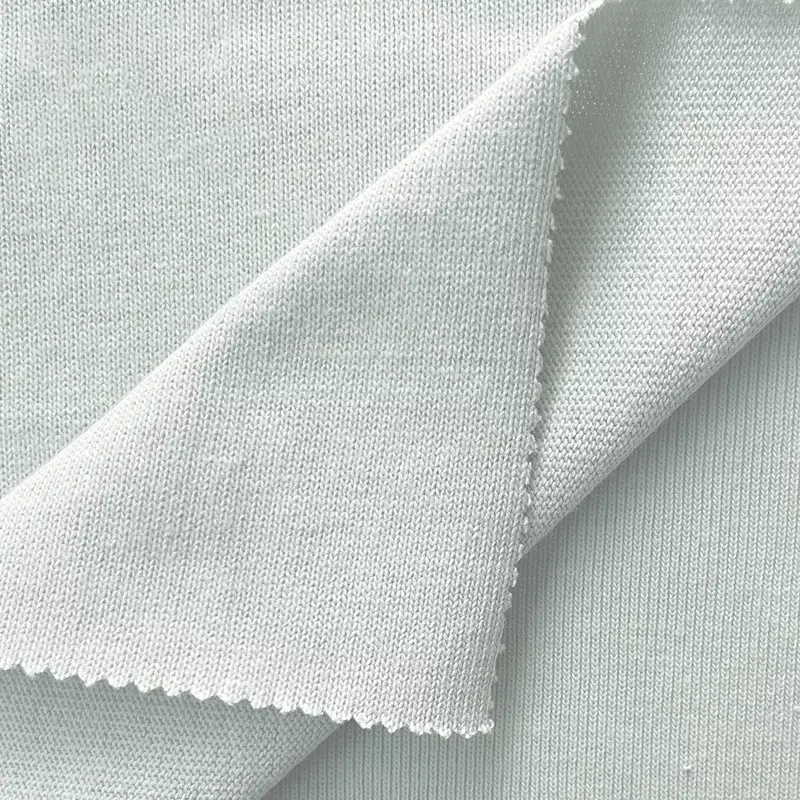
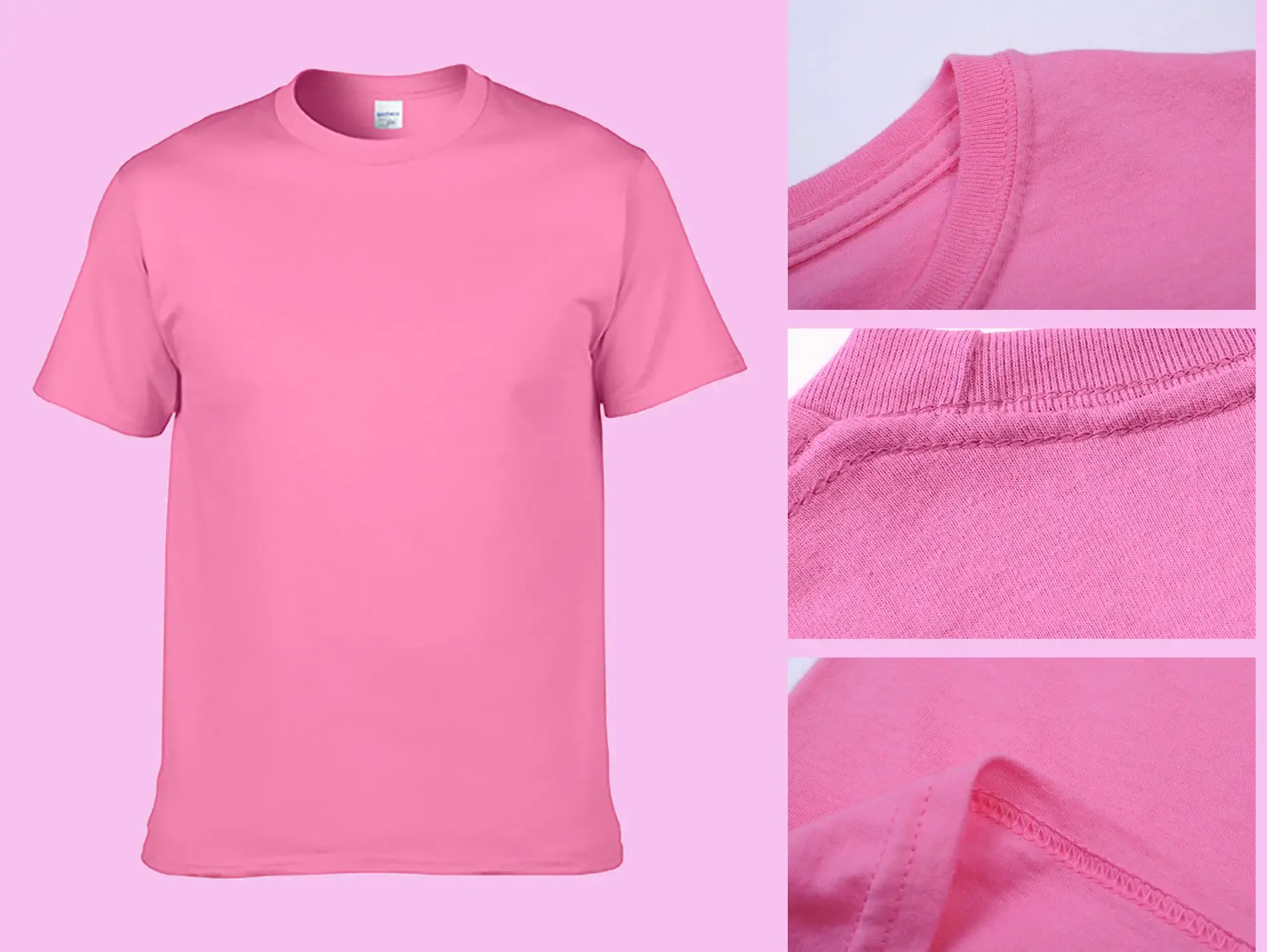
Ring-spun cotton, as previously mentioned, involves drawing out and twisting the cotton fibers into a finer, smoother yarn. This results in a fabric that is softer, more durable, and more comfortable than open-end cotton.
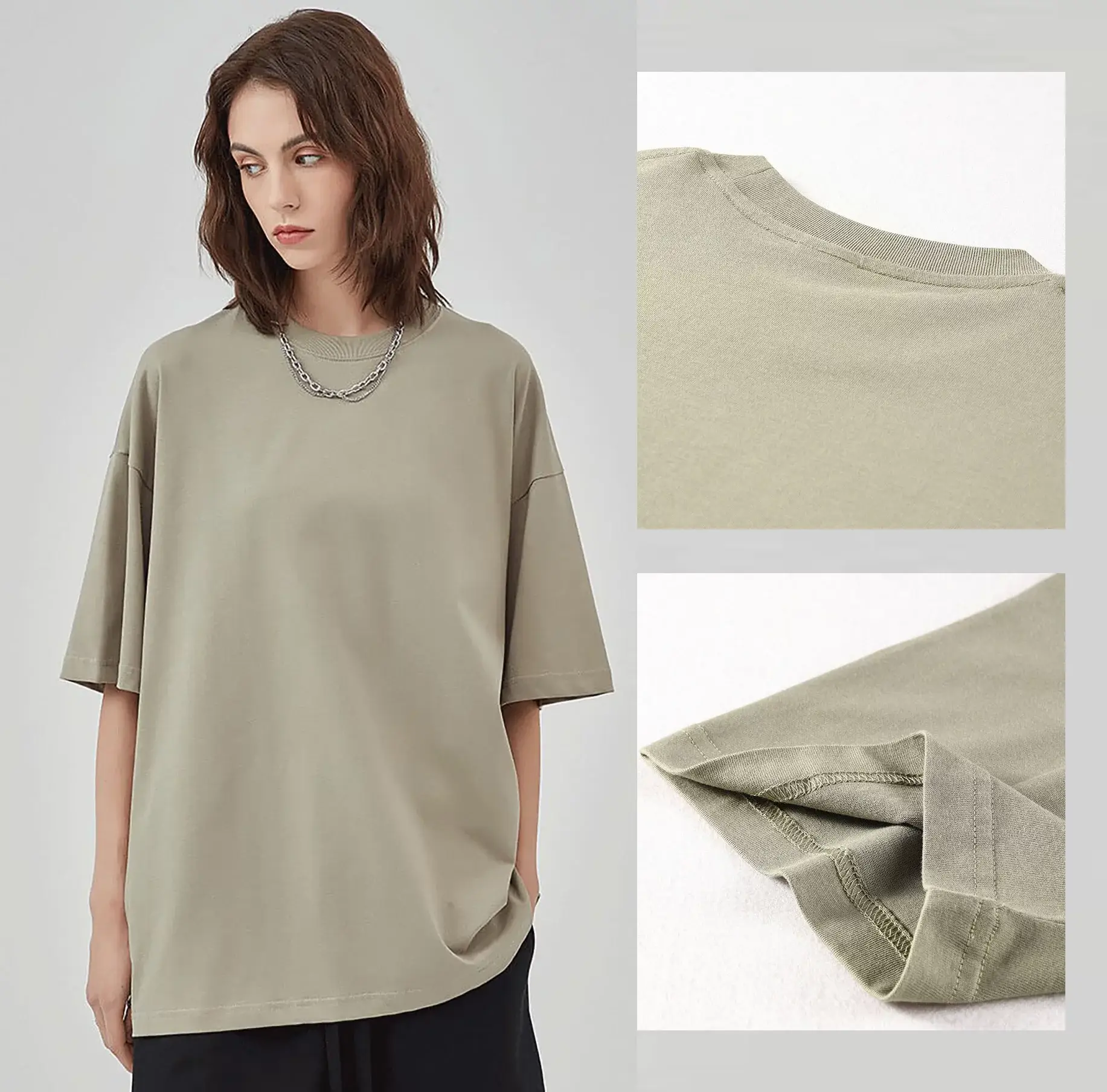
Combed cotton, on the other hand, is a separate process that can be applied to either carded open-end or ring-spun cotton. Combing involves running the cotton fibers through fine combs to remove any impurities or shorter fibers. This process results in a smoother, finer, and stronger yarn, which ultimately leads to a softer and more luxurious feeling fabric.
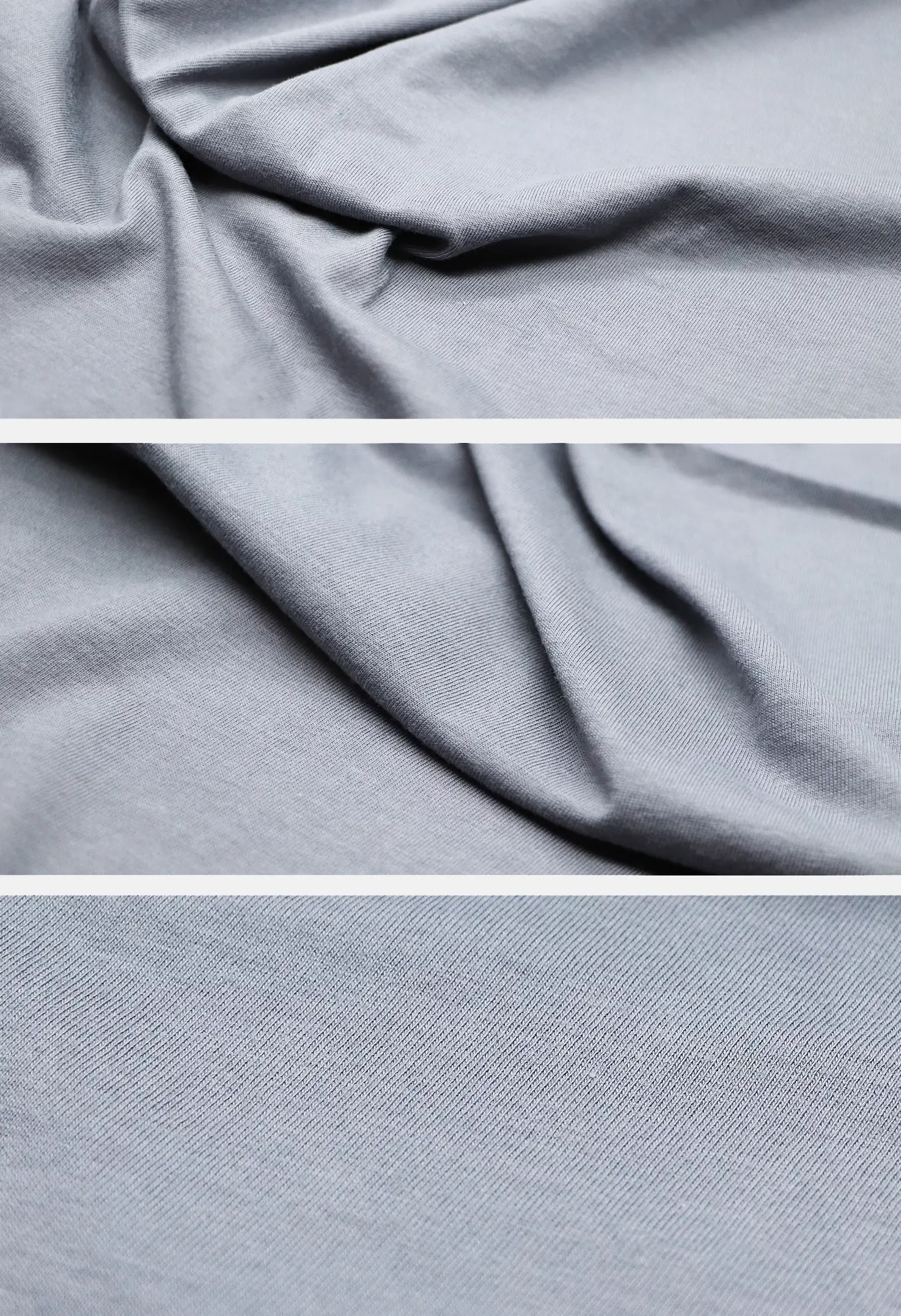
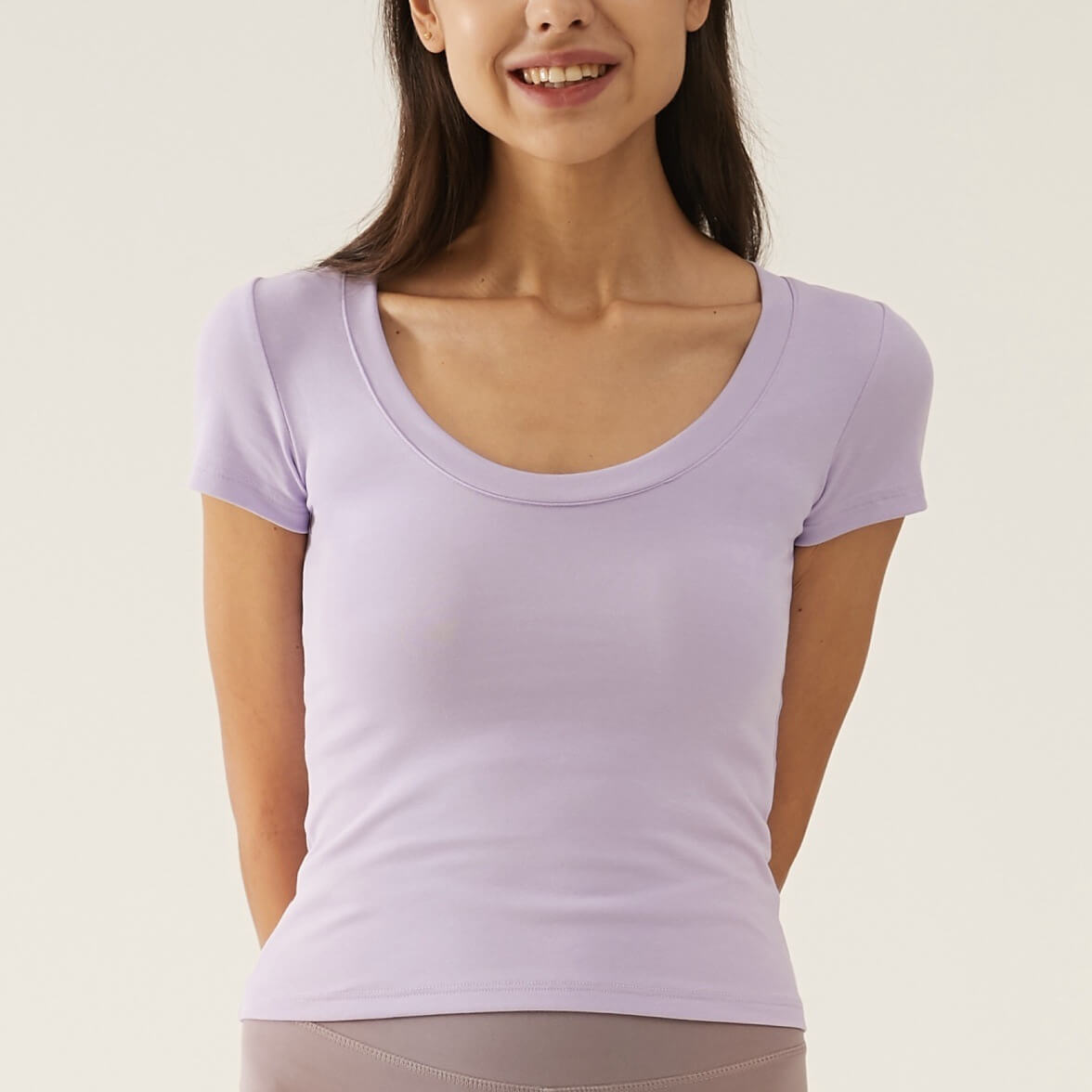
In summary, carded open-end cotton is a less expensive option compared to ring-spun cotton but produces a fabric that is less soft and less durable. Ring-spun cotton is a more premium option that creates a finer, smoother yarn resulting in a softer, more comfortable, and durable fabric. Combing can be applied to either of these spinning methods to produce an even smoother and more luxurious fabric.
Combed cotton, Pima cotton and organic cotton, what’s their difference?
They are all different types of cotton, and differ in terms of their growing and production methods, fiber characteristics, and end-use applications.
Combed cotton refers to a process in which the cotton fibers are carefully combed to remove any impurities and short fibers. This results in a finer, stronger, and more uniform yarn that is smoother to the touch and less prone to pilling.
Pima cotton, also known as extra-long-staple cotton, is a premium type of cotton that is grown in the United States, Peru, and other regions with a similar climate. Pima cotton fibers are longer, finer, and stronger than regular cotton fibers, which makes them softer, more lustrous, and more durable.
Organic cotton is cotton that is grown without the use of synthetic pesticides, fertilizers, or other harmful chemicals. Organic cotton farming practices prioritize sustainability and environmental protection, and they often involve crop rotation, soil conservation, and other eco-friendly techniques.
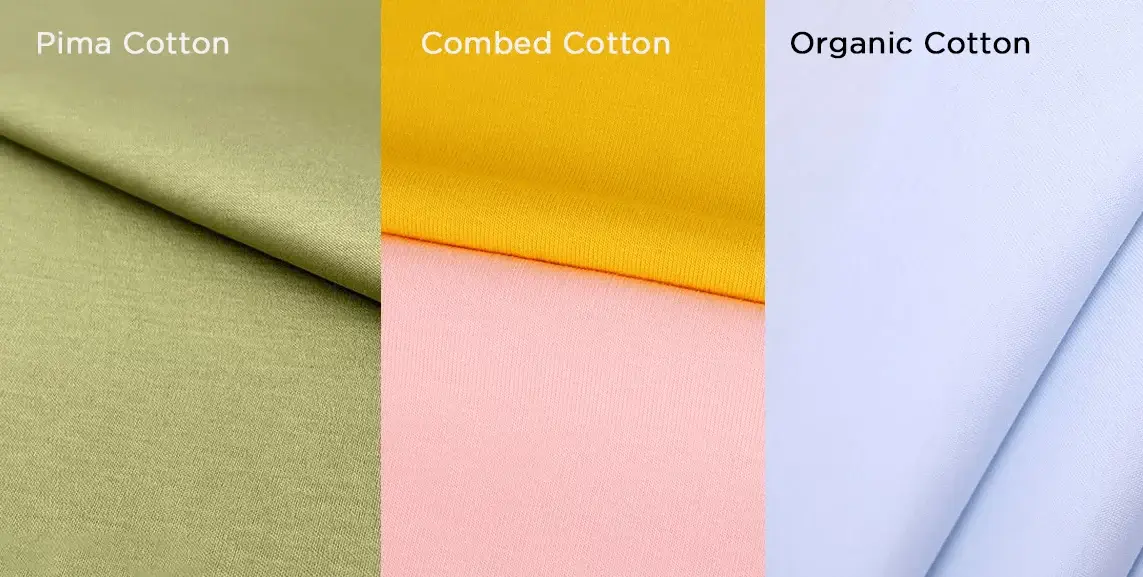
Combed cotton is a premium cotton that has undergone a special combing process to produce a smoother and stronger yarn. Pima cotton is a luxury cotton that is grown in specific regions and has longer, finer, and stronger fibers. Organic cotton is a sustainable and eco-friendly cotton that is grown without the use of harmful chemicals.
| Cotton Type | Pros | Cons |
| Combed Cotton | – Produces a finer, smoother, and stronger yarn – Less prone to pilling than regular cotton – High-quality and durable | – More expensive than regular cotton – Requires additional processing steps – Not as soft as Pima cotton |
| Pima Cotton | – Softer, more lustrous, and more durable than regular cotton – Long fibers make it ideal for high -quality products – Breathable and comfortable to wear | – More expensive than regular cotton – Limited availability due to specific growing regions – Requires careful handling and processing |
| Organic Cotton | – Grown using eco-friendly and sustainable farming practices – Free of harmful chemicals and pesticides – Hypoallergenic and gentle on the skin | – More expensive than regular cotton – Limited availability and variety of products – May be less durable than conventional cotton |
Polyester
Polyester is a type of synthetic (man-made) fabric that is commonly used in sports t-shirts and sublimation t-shirts. It’s made by melting and blending polyester fibers, which are spun into yarns and woven or knitted into fabrics. It is no doubt that polyester fabric is the king of cost-effectiveness.
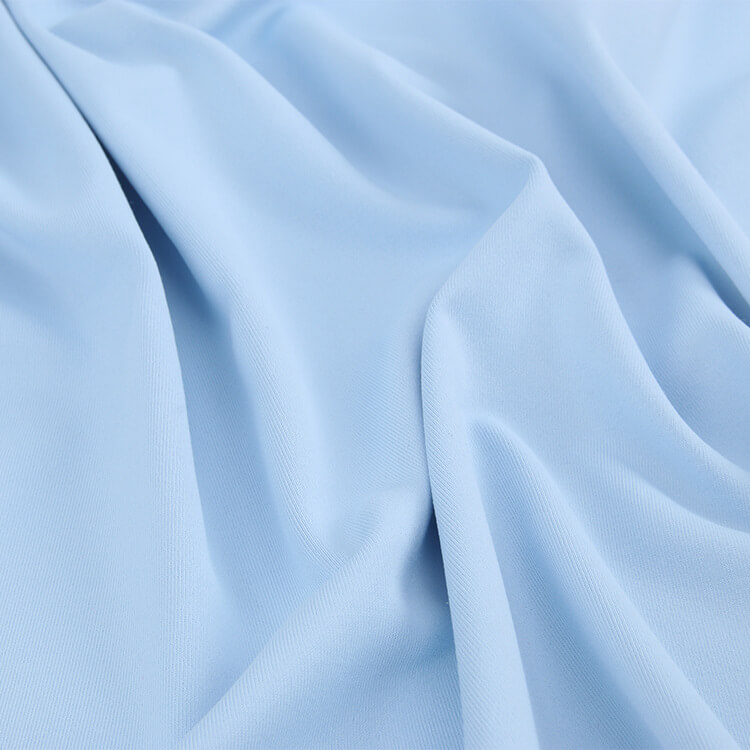
Polyester fabric has a number of properties that make it popular for use in sports clothing and textiles. For one thing, it’s very strong and durable, so it can withstand wear and tear without breaking down or losing its shape. It’s also wrinkle-resistant, so it doesn’t need to be ironed as often as other fabrics. In addition, polyester is moisture-wicking, which means it pulls moisture away from the skin and allows it to evaporate quickly, helping to keep you cool and dry. On the other side, the price of polyester is just half the price of cotton.
Polyester fabric can come in various textures, weights, and colors, so it’s very versatile and can be used for many different applications. It’s often blended with other fibers, such as cotton or wool, to enhance its properties or create a different look or feel.
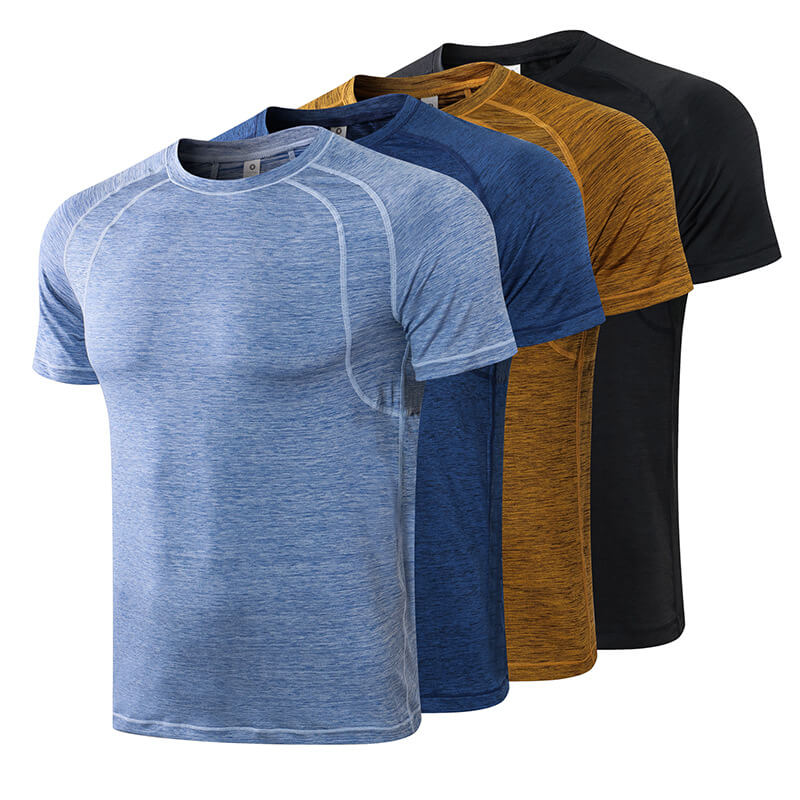
One potential downside to polyester fabric is that it’s not as breathable as natural fibers like cotton or linen, so it may not be the best choice for hot or humid climates.
Polyester fabric is a durable, versatile, and popular choice for workout clothing and textiles due to its strength, wrinkle resistance, and moisture-wicking properties.
Recycled polyester
Recycled polyester is a type of polyester fabric that is made from recycled materials, such as plastic bottles or other post-consumer waste. The process of making recycled polyester involves collecting and sorting used plastic materials, cleaning and shredding them, and then melting and spinning the fibers into polyester yarn.
The benefits of using recycled polyester are numerous. For one thing, it reduces waste and helps to divert plastic materials from landfills and oceans. Additionally, using recycled polyester requires less energy and resources than producing new polyester from scratch, so it’s more sustainable and environmentally friendly.
Recycled polyester fabric has many of the same properties as traditional polyester, such as durability, wrinkle resistance, and moisture-wicking. However, it also has some additional benefits, such as being softer and more breathable than regular polyester.
Recycled polyester can be used for a wide range of applications, including clothing, bedding, and other textiles. Many clothing brands and retailers are now using recycled polyester in their products as part of their efforts to reduce their environmental impact and promote sustainability. If you are a sustainable and ethical clothing brand, don’t miss recycled polyester.
Overall, recycled polyester is a great way to reduce waste and create more sustainable products. By choosing recycled polyester, you can help to support a more circular economy and reduce the amount of plastic waste that ends up in landfills and the environment.
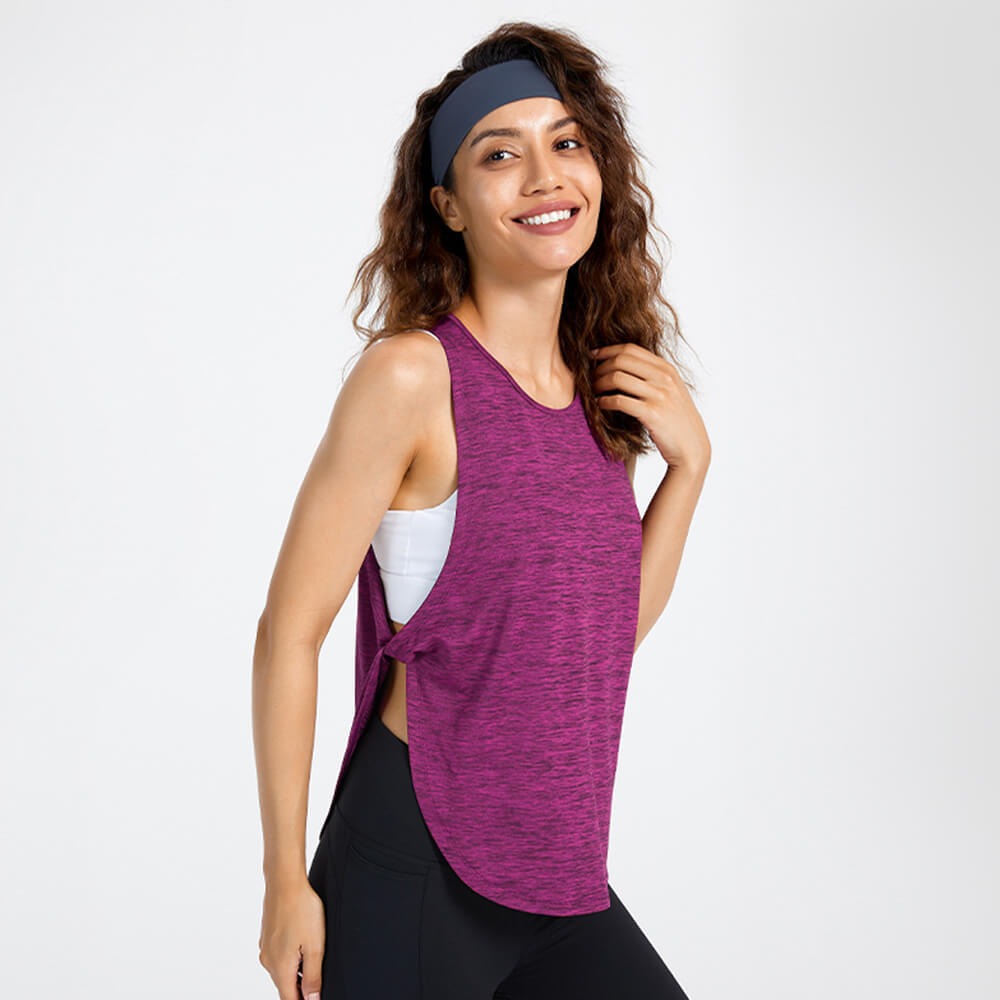
Rayon
We’ve talked about two popular t-shirt materials: cotton (natural fiber) and polyester (synthetic fiber). Rayon is a material that’s in between these two and has special features that make t-shirts even more comfortable and softer.
Rayon is made by processing wood or bamboo pulp to create a substance that’s then woven into yarn. It’s super soft, slightly shiny, breathable, and drapes nicely on your body, but not very durable.
Because of these features, it’s sometimes called “artificial silk.” Rayon is also known as viscose or modal, depending on how it’s made. Modal is more durable because it’s made from beech tree wood. Lyocell is a less common type of rayon that’s processed using more eco-friendly chemicals.
Rayon is often blended with other materials (cotton or polyester) to create fabrics with the desired qualities and softer feels.
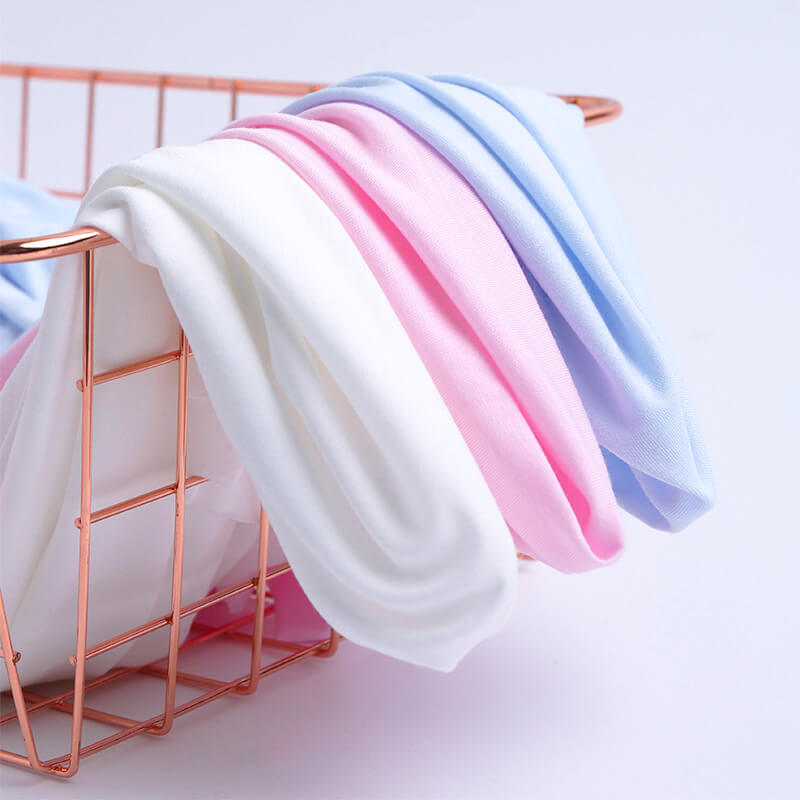
Fabric blends
Until now, we’ve discussed cotton, polyester, and rayon as separate materials. However, if you’ve looked at the labels on your t-shirts, you may have noticed that many of them are made from a blend of two or more materials.
This is because different kind of material has different features. You need to use the materials that suit the designs and usage of your t-shirts.
Cotton-poly and CVC
One common blend you’ll find in t-shirts is a combination of cotton and polyester, often referred to as cotton-poly. These blends take advantage of the breathability of cotton while adding the wrinkle-resistance, stretch, and softness of polyester. They’re also more affordable than 100% cotton fabrics.
Cotton-poly blends are not only used for their added benefits but also for color and texture. For example, adding just 1 or 2% polyester to a sports grey t-shirt can create a speckled, textured look called heather (or marble), which adds depth to the color. Cotton and polyester absorb fabric dye differently, so when they’re processed together, they produce contrasting shades.
You may have also heard of CVC, which stands for Chief Value Cotton. CVC is just another name for a cotton-poly blend that contains more than 50% cotton.
Triblends
Triblends are t-shirts made by combining cotton, polyester, and rayon, creating a fabric with the perfect softness, stretch, and fit. Adding rayon takes the softness to a whole new level, making it so soft you may want to show someone how good it feels. Rayon is often referred to as “artificial silk” because of its softness.
In addition to the softness, rayon gives the fabric a smooth and silky drape that’s noticeable in the fit. You can tell that it’s a triblend by the way the fabric lays and hangs on your body.
Because triblends are made with high-quality and costly materials, they’re typically more expensive than other t-shirts. They’re at the top of the softness hierarchy and are reserved for those who are seeking the best quality and feel. If you want a t-shirt that makes an impression, triblends are a great option. If you want your t-shirt to stand out, don’t miss triblend fabric for your t-shirts.
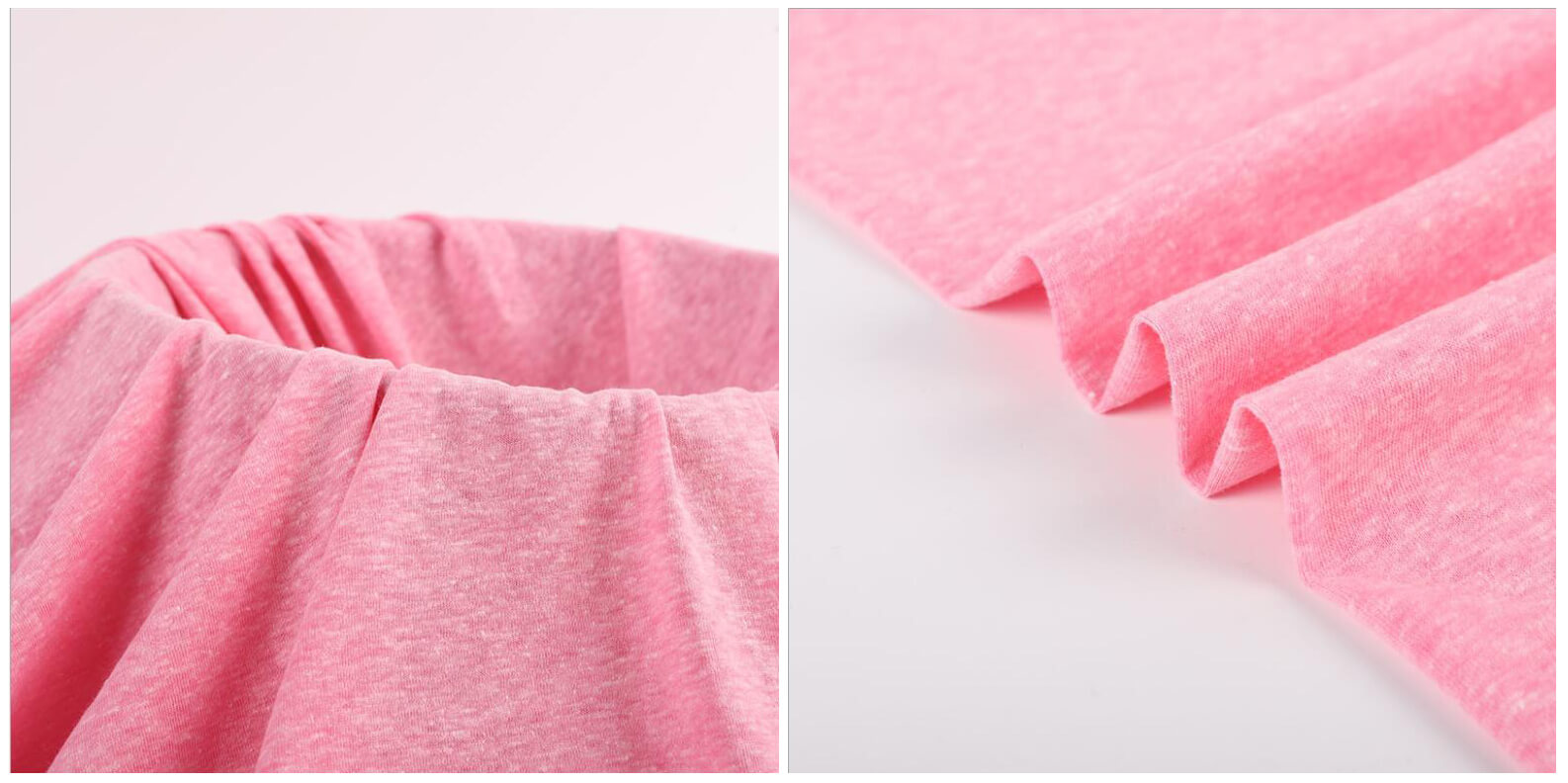
Want to be more professional? Here are more things you need to know.
These extra details are essential in knowing what to expect when you receive your t-shirts and can help you differentiate between different options.
2 important concepts to pay attention to are fabric weight and yarn count, and they are closely related.
Fabric weight
Fabric weight is the weight of the fabric used to make the t-shirt and is measured either as ounces per square yard (OZ) or as grams per square meter (GSM). This measurement translates to how thick or thin your t-shirt is and is one of the best ways to understand its look and feel.
Roughly speaking, fabric weights in the 5.0 oz. range would be mid-weight and below would be light-weight.
Fabric weights 6.5 oz (220gsm)and above would usually be considered heavy-weight, with some being as high as 8.5 oz.
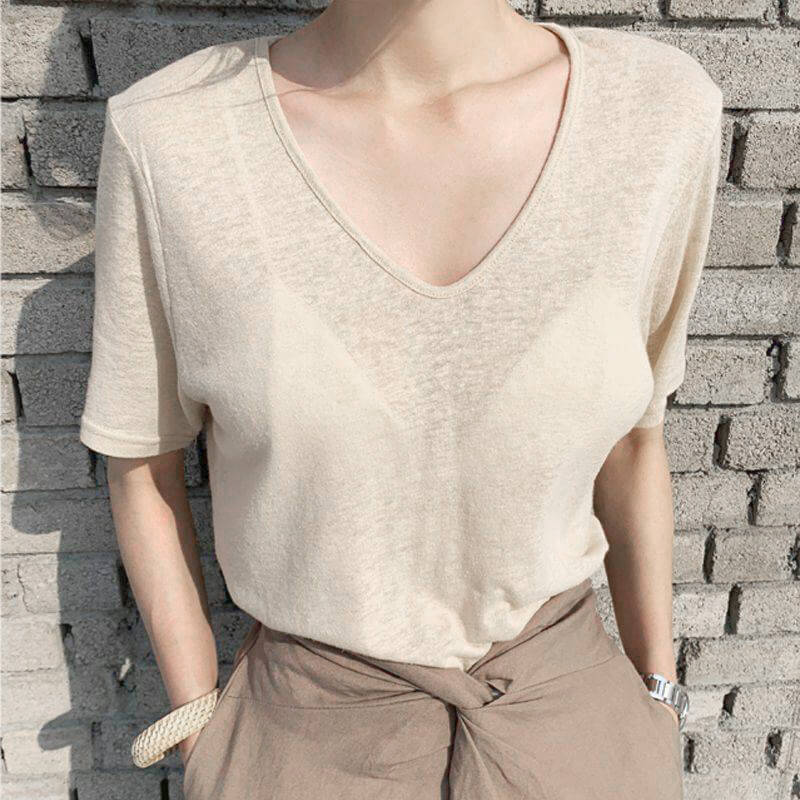
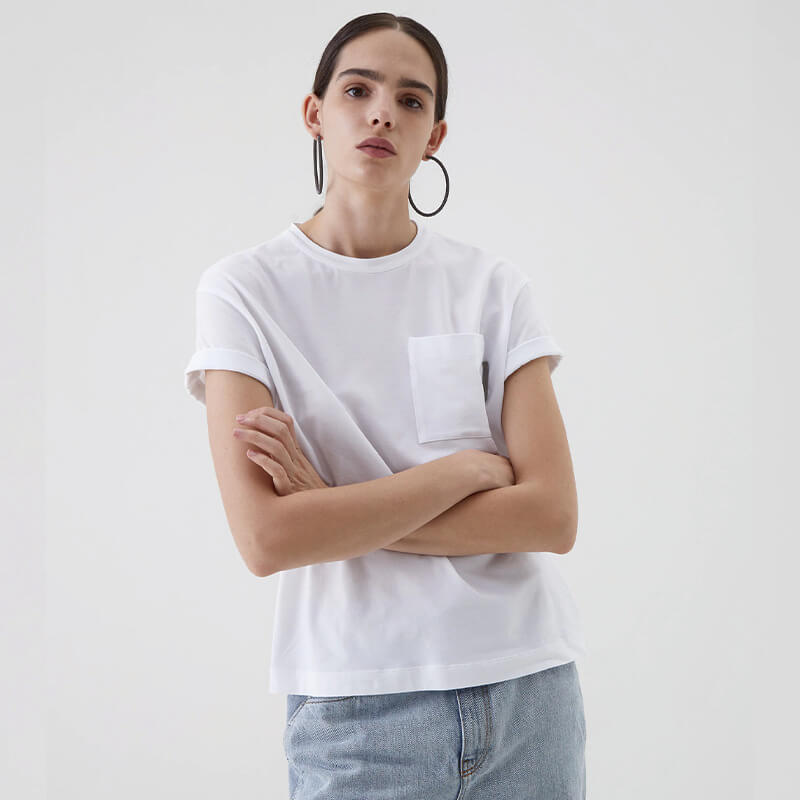
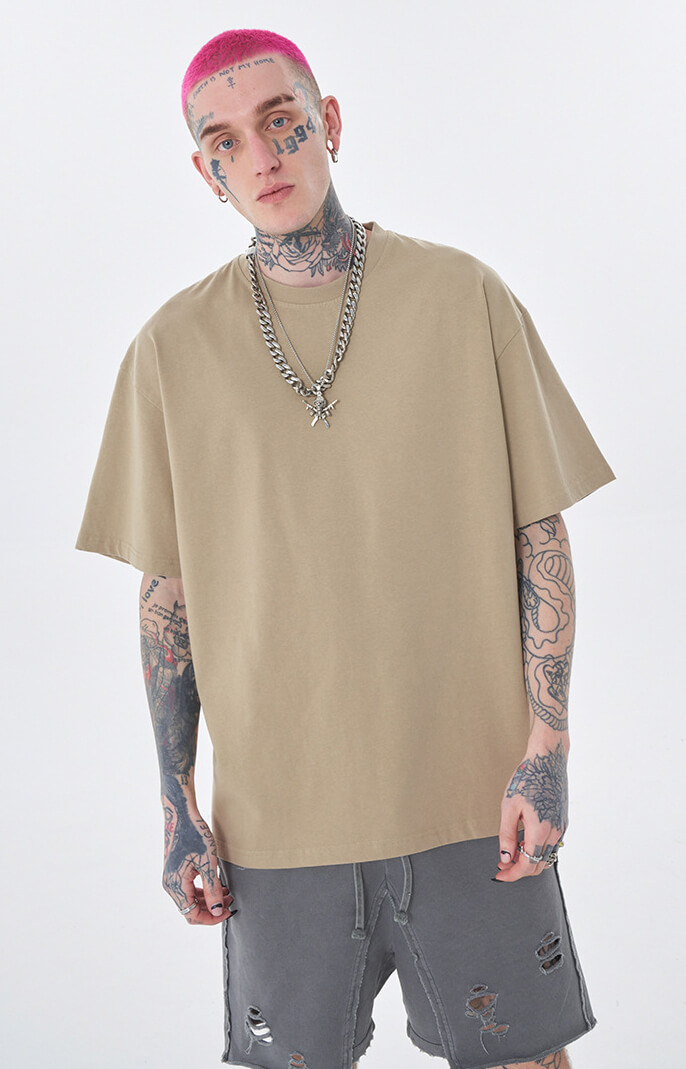
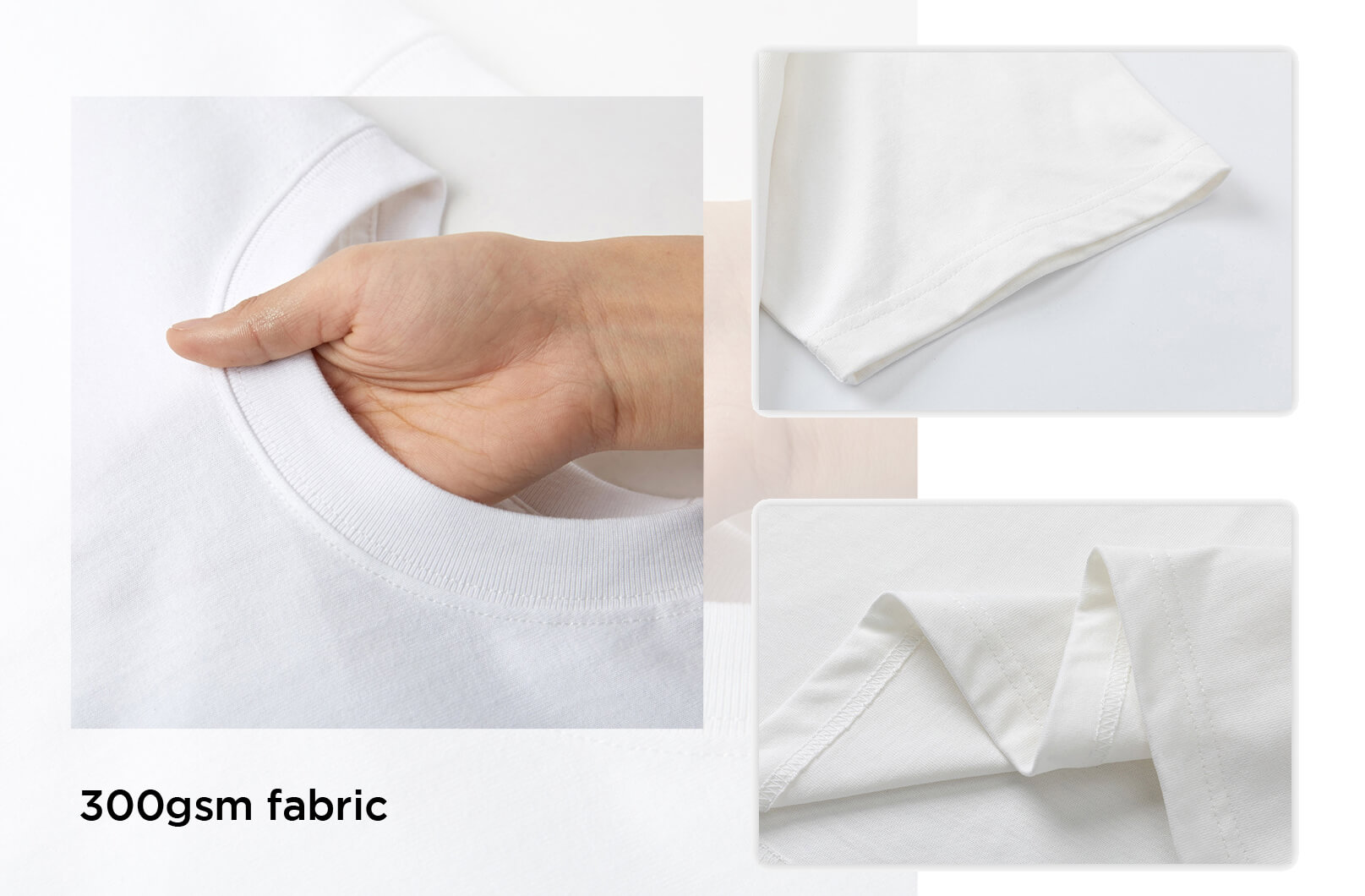
It’s always important to keep in mind that the weight of the fabric can affect both the look and feel of the t-shirt, as well as its opacity. If you’re concerned about the see-through problem of your t-shirt, it’s best to choose a darker color or a fabric that’s a bit heavier.
Tips: Most of sportswear t-shirt are made of light-weight fabrics to keep you cool and more flexible during excising, while streetwear brands prefer heavy-weight fabrics which can bring a more vintage look to the t-shirt. Which fabrics to use depends on your target customers.
Yarn count
Closely related to fabric weight is yarn count. Yarn count is a measurement of how thick or thin the yarn used in the fabric is, calculated by the number of 840-yard lengths that make up 1 pound of yarn. It’s that line in the product details that says something like “30/1”, “30 singles”, or just “30s”.
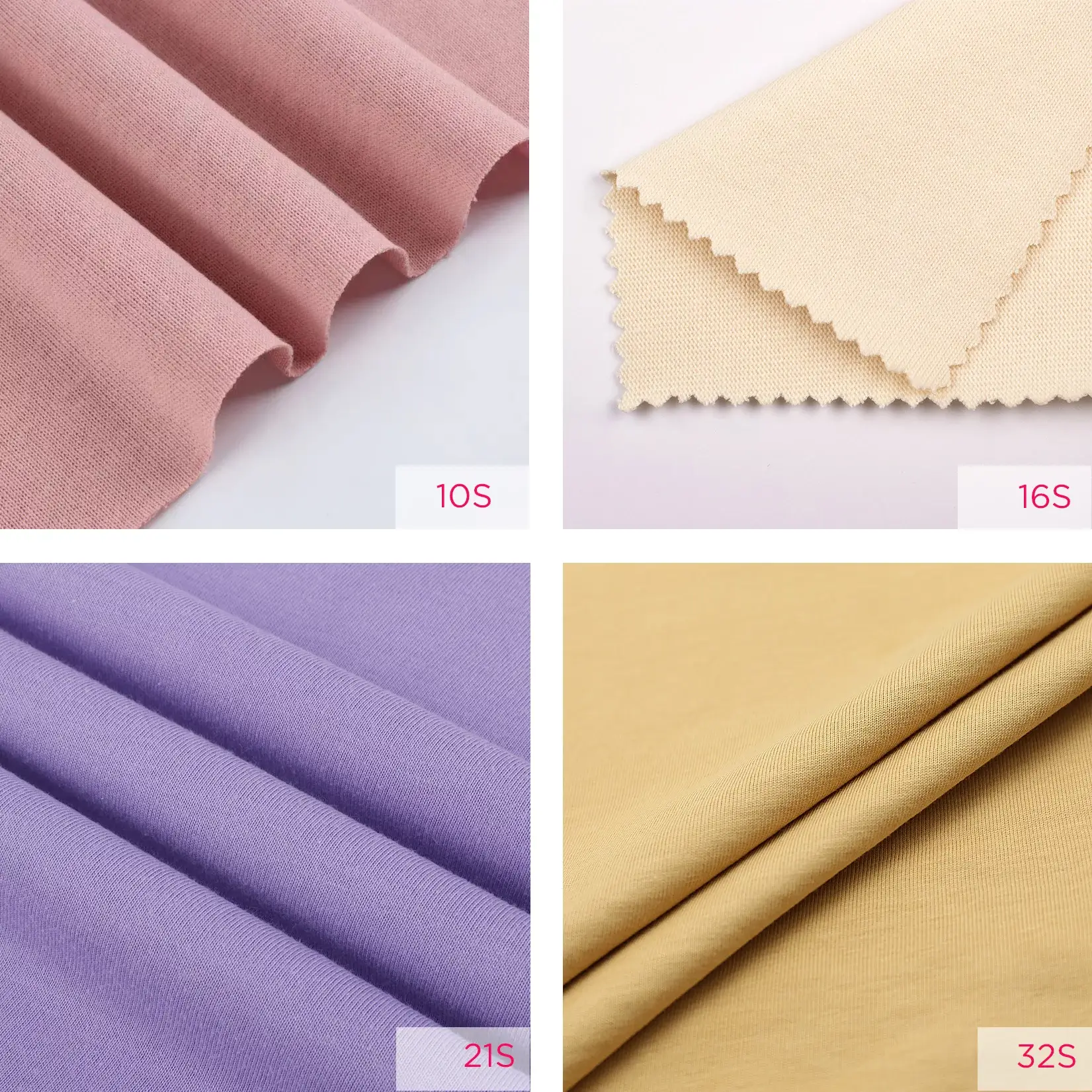
Yarn count is a measure of how fine or coarse the fabric weave is based on the thickness of the yarn. Lower numbers mean a coarser weave, while higher numbers mean a finer weave.
The yarn count affects two important factors in t-shirt fabric: softness and weight. A finer yarn produces a smoother and softer fabric, which also prints better because the ink has a more solid surface to lay on. Yarn count also determines the weight of the fabric, with lower yarn counts producing heavier, thicker t-shirts and higher yarn counts resulting in lighter, thinner t-shirts.
Why pricier t-shirts are usually lighter than cheaper ones? The reason is that high-quality t-shirt fabric is made with a finer yarn to achieve a tighter weave, resulting in a softer and smoother fabric that is more accepting of a smoother print.
A few more t-shirt related terms
At the end of this guide, let’s go over some other fabric-related terms that you may see.
Heather: This is a speckled texture look created when two different colored yarns are combined in a fabric weave, like cotton and polyester, which dye differently.
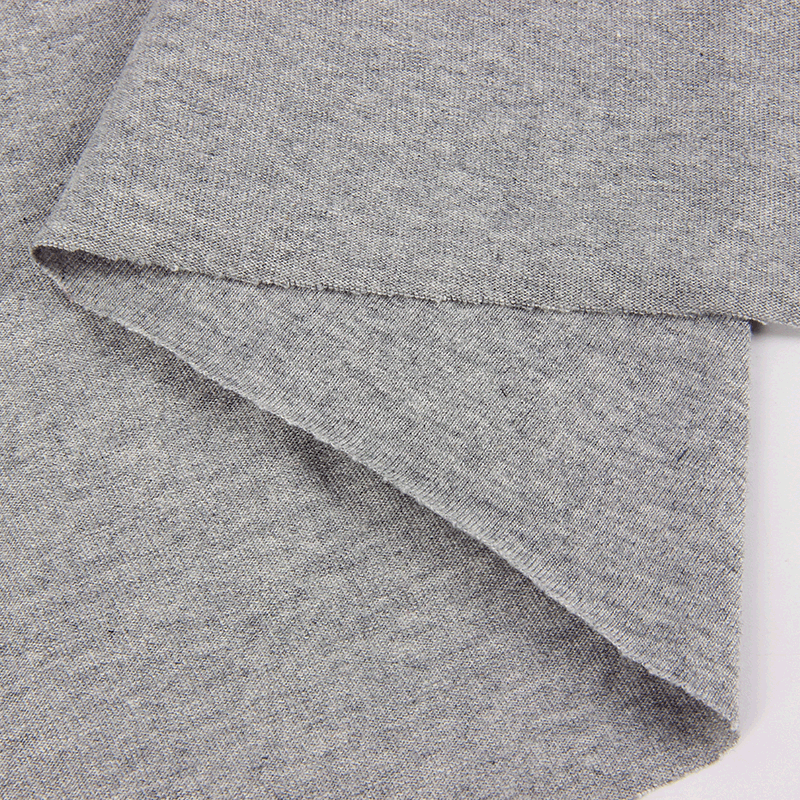
Jersey: A type of weave used to produce fabric with fine ribs on the front and semicircle loops on the back. It’s commonly used in t-shirt fabric because of its natural stretch.
Rib knit: Another kind of fabric weave used for collars and sleeve cuffs because of its elastic qualities and durable. It’s made of alternating rows of 2 different weaves that can be arranged in different patterns.
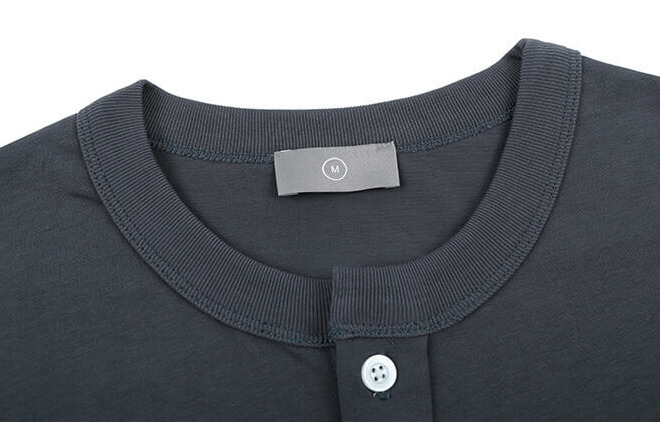
Slub: A fabric with thicker and thinner areas that create a textured feel. Slubs were originally mistakes in yarn manufacturing, but they create a cool effect when woven into fabric.
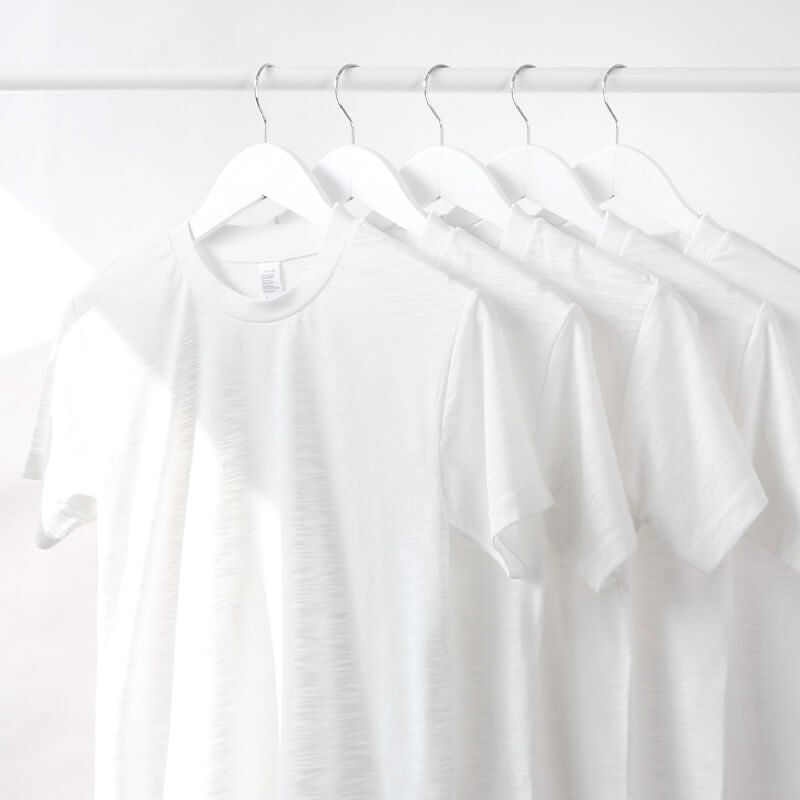
Conclusion
This guide has a lot of information about t-shirt fabrics, but here’s a summary to help you understand the key points:
Cotton comes in three main varieties: 100% cotton (cheapest), ring-spun (softer but still affordable), and combed and ring-spun (even softer with a mid-tier cost).
Polyester can be used alone as a performance fabric or added to cotton to make the shirt more durable. These blends cost a bit more, but they’re trendy and soft. Look for the “CVC” keyword for better-priced options.
Triblends and poly-viscose are the most premium options if you are looking for some unique things because they’re super soft and comfortable, but they’re also the most expensive.
Pay attention to the fabric weight to know how thick or thin the shirt is. Above 6.0 oz. is heavy, 5.0-6.0 oz. is medium, and below 5.0 oz. is light and might be see-through in white colors.
Remember, there are no bad options – just different ones depending on your budget and the occasion. Use these facts about t-shirt fabrics to make the best choice for you!
If you are still confused and have some questions, let’s talk! We will find you the best fabric solutions for your t-shirt designs.
